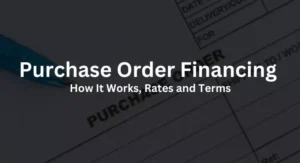
Pareto Analysis: What Is It?
In addition to being utilized in commercial decision-making, Pareto analysis has applications in welfare economics and quality control, among other areas. Much of it is predicated on the “80-20 rule.” Pareto analysis is a decision-making tool that uses statistics to identify the few input factors—desirable or undesirable—that have the most influence on a certain result.
The foundation of Pareto analysis is the notion that 80% of a project’s benefits may be obtained with 20% of the labor; on the other hand, 80% of issues can be linked to 20% of their causes. A strong tool for decision-making and quality assessment is Pareto analysis. It is, in the broadest sense, a method of obtaining the information required to establish priorities.
Understanding Pareto Analysis

Vilfredo Pareto, an economist from Italy, found in 1906 that just 20% of the population in the nation controlled 80% of the country’s land. He carried out more investigation and discovered that this unequal distribution of wealth existed throughout all of Europe. The formal definition of the 80-20 rule was as follows: An estimated 80% of a nation’s wealth or total income is held by the richest 20% of its people.
About 40 years after Pareto’s study was published, in 1937, Romanian-American management theorist Joseph Juran came upon it. The 80-20 rule was then renamed as “Pareto’s Principle of Unequal Distribution” by Juran.
To determine if the rule might be used to solve issues that businesses faced, Juran expanded the application of Pareto’s principle to the business sector. He noticed that in quality control divisions, a small fraction of all defect sources accounted for the majority of production problems. Therefore, 20% of flaws create 80% of the issues, according to Juran’s findings, which suggests that if you concentrate on addressing that 20%, you may make a significant difference with little effort.
Pareto analysis is still used today to identify the problems that are most prevalent across departments, companies, or business sectors.
Business managers are usually the ones who utilize Pareto analysis. They usually use a statistical study, such a cause and effect analysis, to generate a list of possible issues and their corresponding results. The 80-20 rule may be used based on the data from the cause and effect study. The following are some business-related cases where Pareto analysis may be useful:
- providing high-priority stakeholders with information regarding flaws or mistakes
- arranging activities or errors in order of severity, that is, according on how they will affect a system or company
- examining data or mistakes or flaws
You may also like reading: The Pareto Principle in AI — Just a Thought (is it?)
Pareto Analysis Steps
Problems may be categorized by impact on profitability, customer complaints, technical difficulties, product defects, delays and backlogs from missed deadlines, and so on by using the 80-20 rule. Based on the quantity of money or sales, the amount of time wasted, or the quantity of complaints, each of these problems is rated. The following is a brief summary of the Pareto analysis steps:
- Determine the issue or issues
- Enumerate or pinpoint the root cause of the concerns or troubles, keeping in mind that there may be more than one source.
- Assign a number to each issue to indicate its priority according to the degree of harm it causes to the business.
- Sort the complaints into categories, such system difficulties or customer service.
- Create and carry out an action plan to address the issues, concentrating on the issues with higher scores initially.
Not every issue will have a high score, and it might not be worthwhile to pursue certain lesser problems at first. Companies may address issues that significantly affect sales, earnings, or customers more effectively by focusing resources on high-impact issues or issues with higher ratings.
The Pareto Chart: How to Make It
A frequent practice in Pareto analysis is to show the frequency of each monitored variable visually. This illustration, known as a Pareto chart, arranges and presents data to illustrate the relative significance of several issues or problem sources. In that it arranges elements (from highest to lowest) in relation to a measurable consequence of interest, such as frequency, cost, or time, it is comparable to a vertical bar graph. This is how to create a Pareto chart.
- Create a list of issues that need to be contrasted.
- Create a common metric to compare the things using. For instance, the frequency of occurrence (e.g., usage, complications, mistakes); the duration (time); and the amount of resources used (cost).
- Select a period of time to gather the data.
- Add up the number of times (or cost or total time) that each thing happened. The grand sum for all items may then be calculated by adding these quantities.
- By adding up each item, dividing it by the total, and then multiplying the result by 100, you may find the percentage of each item in the grand total.
- Sort the elements under comparison by decreasing order of the comparison measure, for example, from most often to least frequent. An item’s cumulative percent is the total of its percent of the total and the percentages of all the other items that precede it in the ranking sequence.
- Sort the components on a graph’s horizontal axis from highest to lowest value. Indicate the numbers (frequency, time, or cost) on the left vertical axis.
- Put the cumulative percentages on the right vertical axis (the cumulative total should equal 100%).
- Put the bars for every item in place.
- Plot the cumulative percentages as a line graph. The top of the first bar and the first point on the line graph should coincide.
Analysis is the last phase. Now you may examine a Pareto chart by determining which elements seem to be responsible for the majority of the challenge. The Institute for Healthcare Improvement has identified three critical mistake types that are seen during surgical set-up, as illustrated.
Benefits and Drawbacks of Pareto Analysis

Pareto analysis has the general benefit of assisting in the identification and determination of the underlying causes of flaws or issues. By concentrating on the underlying causes of the current issue, time is also saved. Time is the most valuable resource in business. Owing to time constraints, optimization is typically the aim rather than elimination or maximization. Additionally, Pareto’s rule aids in optimization. As a result, companies may address flaws or mistakes that are most important first.
The main disadvantage of Pareto analysis is that it does not provide solutions to issues; it is only helpful for determining or identifying the root causes of a problem(s). In addition, Pareto analysis only focuses on past data. While information about past errors or problems is useful, it’s not a guarantee that it will be relevant in future scenarios.
Pareto analysis’s primary drawback is that it can only be used to determine or identify the underlying causes of problems; it cannot solve problems on its own. Furthermore, Pareto analysis is limited to historical data. While knowing about prior mistakes or issues is helpful, there’s no assurance that it will apply in similar situations in the future.
Pareto charts also have the drawback of only being able to display qualitative data that is observable; quantitative data cannot be represented using them. For instance, the mean, standard deviation, average, variability, and changes in the observed characteristic over time cannot be determined using Pareto charts.
Benefits
- aids in locating and identifying the primary sources of flaws or issues
- Defects and faults may be eliminated or resolved by organizations by giving them top attention.
- Ascertain the problem’s cumulative impact, which is an effect brought on by a problem that has persisted for a long time.
- Pareto charts are a useful tool for organizations to plan necessary actions or steps to address issues.
- Pareto charts can improve one’s ability to solve problems and make decisions.
Drawbacks
- only useful for figuring out or identifying the underlying causes of a problem(s); it does not offer remedies to problems.
- only considers historical data
- Pareto charts cannot be used to depict quantitative data; they can only display qualitative data that can be observed.
Example of Pareto Analysis
The state of Washington’s Department of Ecology conducted research to determine the causes of oil spills. They obtained data on 209 oil leak events, taking into account any input from accountable parties as well as an internal peer evaluation of the reasons.
The Department of Ecology has determined that there are several reasons why oil spills occur. The following were noted as the main causes:
- Inattention/distraction (38 times cited)
- Procedural Error (31)
- Judgment (26)
- Mechanical Failure (23)
- Structural Failure (20)
- Unknown Causes (11)
Six explanations, or slightly more than 20% of the overall causes (a total of 29 casual elements), have been discovered. However, 71% (149 out of 209 occurrences) of the oil leaks that were found could be attributed to these six reasons combined. In this Pareto analysis example, the majority of the causes of oil leaks can be attributed to only a small number of data components.
Conclusion
In conclusion, Pareto Analysis stands as a beacon for businesses seeking strategic insights and efficient problem-solving. While it may not provide direct solutions, its ability to pinpoint root causes empowers businesses to allocate resources effectively and make informed decisions.
FAQs
Is Pareto Analysis only for large businesses?
No, Pareto Analysis can benefit businesses of all sizes by focusing on critical issues.
How often should a company conduct Pareto Analysis?
The frequency depends on the business dynamics, but periodic assessments are recommended.
Can Pareto Analysis be used in non-business contexts?
Absolutely, Pareto Analysis principles are applicable in various scenarios, including personal decision-making.
Is there software available for creating Pareto charts?
Yes, several tools can assist in creating Pareto charts, streamlining the process.
What is the main takeaway from Pareto Analysis?
The main takeaway is the ability to prioritize efforts based on the significant impact of identified issues.





